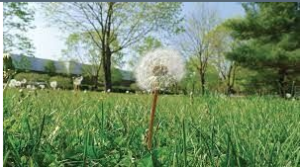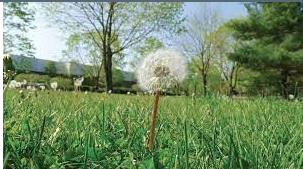Many of us have been excited about the seasonal return of the farmer’s market. The fresh quality and the variety of offerings are tantalizing and nutritious.
What if I told you that you can get even fresher, more nutrient-dense food for free, anytime you like?
These are what many would categorize as weeds…or a different framework sees them as wild foods. Wild foods are in abundance all around us, even in our backyard. Dandelion, mallow, lambsquarter and purslane are only a few. Plantain, clover, mustard, chickweed and burdock can be found almost anywhere wild. Even the “dreaded” thistle can be tamed and repurposed as a culinary delight!
Have you ever stopped to think about why you pull weeds from your garden? It’s because they preferentially take nutrients from the soil rather than your veggies. This is because they are more resilient than our domesticated plants. They are better at extracting minerals from the earth so we remove them from the garden so our tomatoes will flourish. Many of the plants you remove from your garden you could actually bring right into your kitchen rather than your trash. Not only are they power-packed with nutrients, they are pretty tasty too!
Wild foods are inherently pesticide and GMO free. Modern agriculture often uses a mono-crop system that is destructive to the land over time. Those products are typically refined, cooked, packaged and/or transported across the globe – far from optimal freshness. When we eat these foods that are mineral-deficient, we tend to overeat because we are not receiving the nutrition our bodies require. This can lead to chronic disease and the destruction of both plant and animal ecosystems.
So many of the underlying health issues facing Americans can be addressed with the medicines in these plants. High in chlorophyll and minerals, many of these wild foods help to cleanse the liver, build bone, tonify muscle, strengthen organ systems, and detoxify the colon. In general, roots are highly supportive of liver function and leaves are more specific for kidney health, but each do some of both.
To get started, simply go into your backyard and pick a few dandelion leaves. I bet you have mallow (or chickweed) somewhere nearby too. You can toss these leaves into your salad or add to your favorite smoothie. If you are in the wilderness, be sure to only harvest what you need and only take some plants from each area so they can continue to self-populate. An offering of gratitude (a word, prayer or song) as a token of thanks goes a long way.
As we start to eat the foods that grow naturally around us, we become more connected to the land, and better stewards of the environment. We receive the nutrition and medicine contained within that supports our bones, livers and kidneys. We slow down and get back into alignment with seasonal rhythms that allows us to flow more gracefully with our changing environment. Through honoring our relationship with our plant friends, we create more harmony where all communities thrive.
I want to offer special thanks to Katrina Blair and Turtle Lake Refuge for teaching and inspiring me for 2 decades. 


 Dr. Nicola is the founder of Pura Vida Natural Healthcare in Durango, CO where she sees people locally and virtually. She's an expert in the treatment of anxiety, depression and insomnia. By connecting people back to themselves, she is able to minimize supplements and medications as her patients become empowered to heal themselves.
Dr. Nicola is the founder of Pura Vida Natural Healthcare in Durango, CO where she sees people locally and virtually. She's an expert in the treatment of anxiety, depression and insomnia. By connecting people back to themselves, she is able to minimize supplements and medications as her patients become empowered to heal themselves.